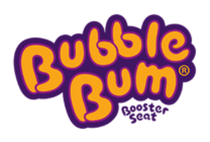
Navigating the Transition: BubbleBum Booster Seats Explained
Navigating the Transition: When Your Child Needs a BubbleBum Booster Seat for Car Seat Travel (and When They Don't)
As parents, we constantly juggle safety, convenience, and the ever-changing needs of our growing children. One of the most common questions revolves around car seat safety: When is it time to move your child from a traditional car seat to a booster, and eventually, when can they safely use a vehicle's seat belt alone? Understanding these transitions is crucial for ensuring your child's safety on every journey, whether it's a quick trip to the grocery store or an epic family adventure to Disney, across Europe, or within the USA.
Why Booster Seats Are Essential for Growing Kids
Booster seats are designed to "boost" your child up so that the vehicle's lap and shoulder seat belt fits them correctly. Without a booster, the seat belt might ride up on their stomach or neck, which can cause serious injuries in a crash. They bridge the gap between a forward-facing car seat with a harness and using the adult seat belt system.
Making the Move: From Car Seat to Booster Seat
Knowing when to transition your child into a booster seat is primarily about their size, not just their age. While guidelines often suggest around age 4, it's more about meeting specific weight and height requirements. Most children are ready for a booster when they have outgrown the weight or height limits of their forward-facing car seat with a harness. This typically means they weigh between 40-65 pounds and are tall enough for the shoulder straps to be at or above their shoulders in the highest setting.
- Weight & Height: Check your car seat's manual for its specific limits. Most forward-facing seats are outgrown when a child reaches 40-65 pounds or their ears are above the top of the car seat shell.
- Maturity: Your child should be able to sit properly for the entire ride, without slouching or playing with the seat belt.
Booster seats come in two main types: high-back boosters, which offer head and neck support, and backless boosters, which are more portable. For travel, especially if you're considering a car rental in Europe or the USA, a portable option like the BubbleBum booster seat can be incredibly convenient for kids' car seat travel needs.
Beyond the Booster: When Can Kids Use a Seat Belt Alone?
This is often the trickiest transition for parents. The goal is for the vehicle's seat belt to fit your child correctly, providing optimal protection. The National Highway Traffic Safety Administration (NHTSA) recommends the "5-Step Test" to determine if a child is ready to go without a booster:
- Does the child sit all the way back against the vehicle seat?
- Are the child's knees bent comfortably at the edge of the vehicle seat? (Not extended straight out)
- Does the shoulder belt lie across the middle of the child's shoulder and chest? (Not on the neck or off the shoulder)
- Is the lap belt low on the child's hips, touching the upper thighs? (Not on the stomach)
- Can the child stay in this position for the entire trip?
If you answer "no" to any of these questions, your child still needs a booster seat. Most children will not pass the 5-Step Test until they are between 8 and 12 years old and at least 4 feet 9 inches tall. Remember, even if they meet the age requirement, size and maturity are the ultimate deciding factors.
Travel Smart: Booster Seats for Every Adventure
When planning family travel, especially involving a car rental, thinking about your kids' car seat needs is paramount. Whether you're heading to Disney, exploring the scenic routes of Europe, or embarking on a cross-country road trip in the USA, having the right booster seat can make all the difference. Portable and inflatable options, such as the BubbleBum booster seat, are fantastic for travel as they are lightweight, compact, and easy to pack, ensuring your child is safe and compliant with local laws wherever your adventures take you.
Always check local regulations for car seat and booster seat laws in your destination, as they can vary significantly between states and countries. Prioritizing safety means ensuring your child is in the appropriate restraint for their size and age, every single time.
Prioritizing Safety on Every Journey
Transitioning your child through different stages of car seat safety is a significant milestone. By understanding the guidelines for when to use a booster seat and when to move to a seat belt alone, you empower yourself to make informed decisions that keep your little ones safe. Always refer to your car seat and vehicle manuals, and remember that safety is a journey, not a destination. Drive safe!
